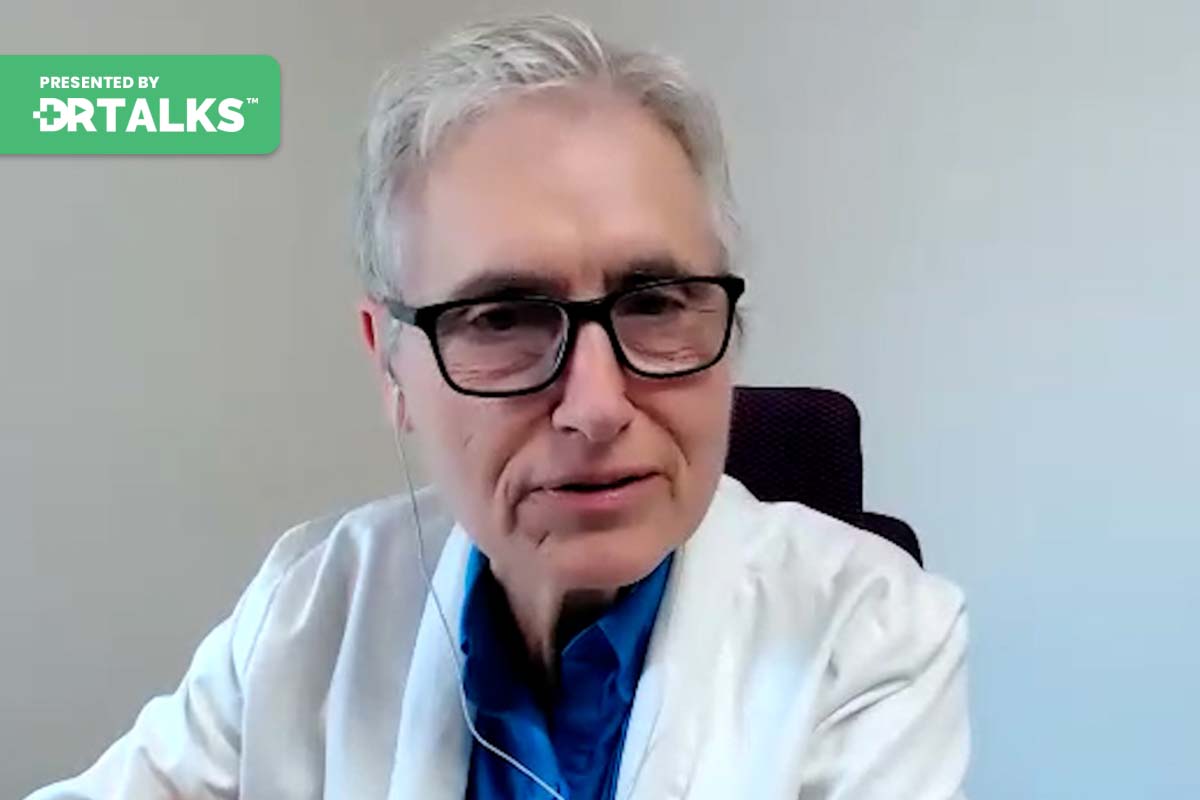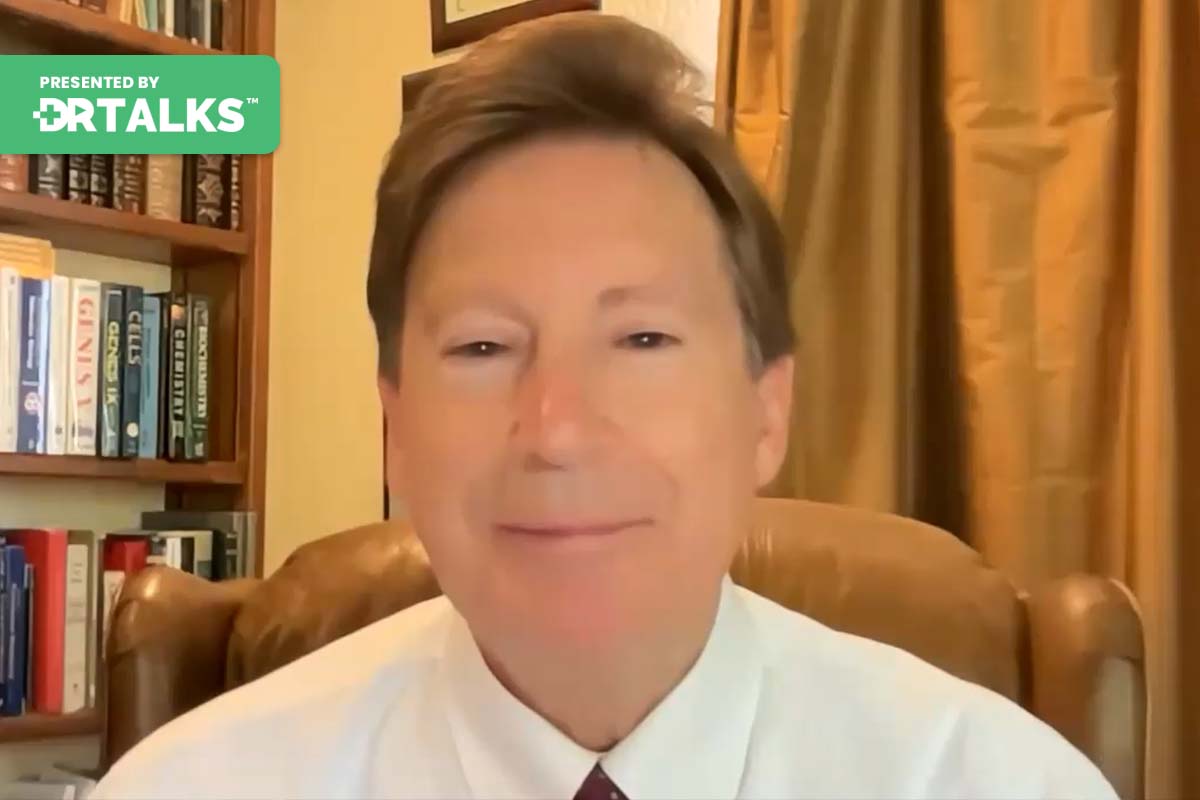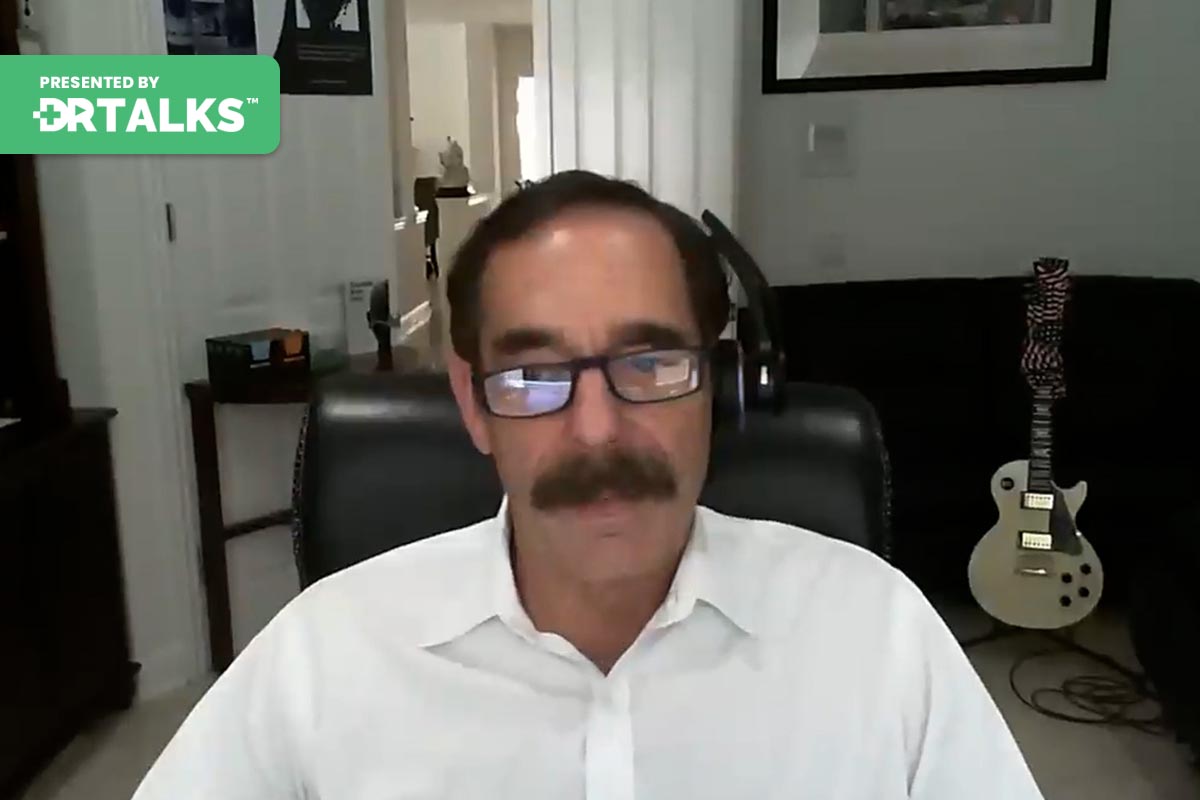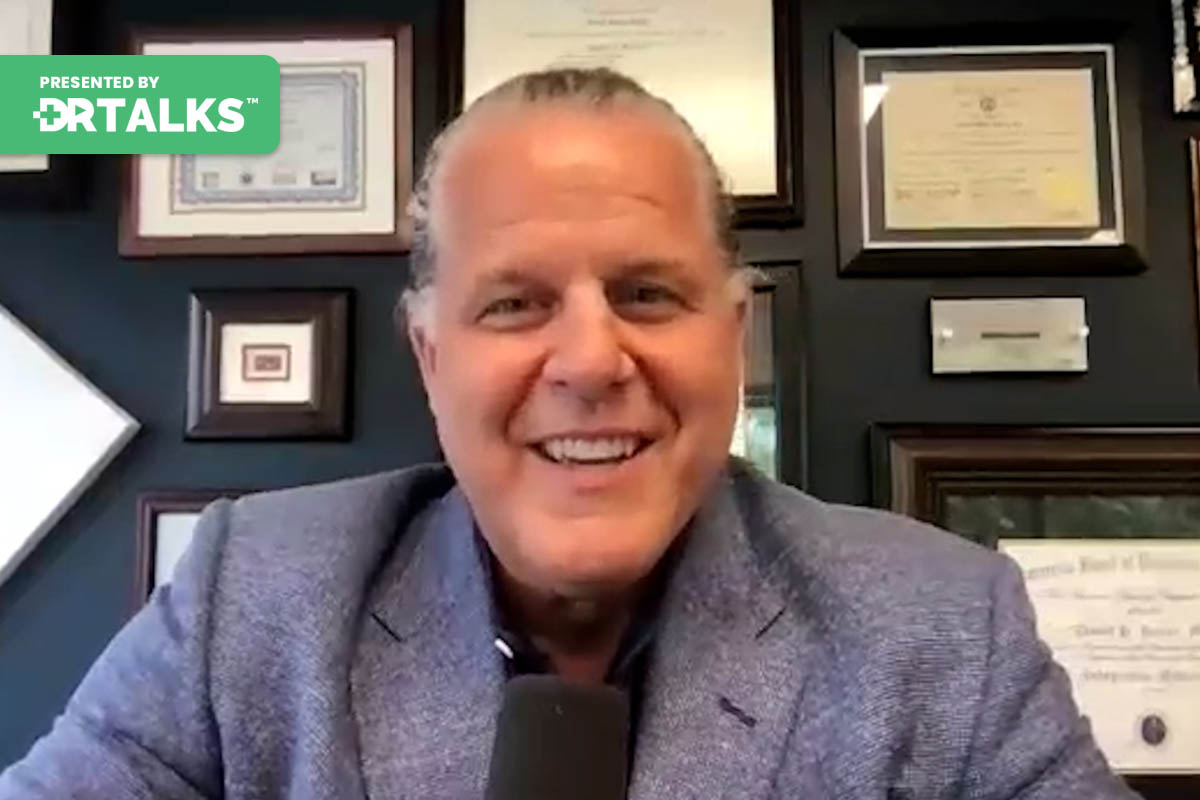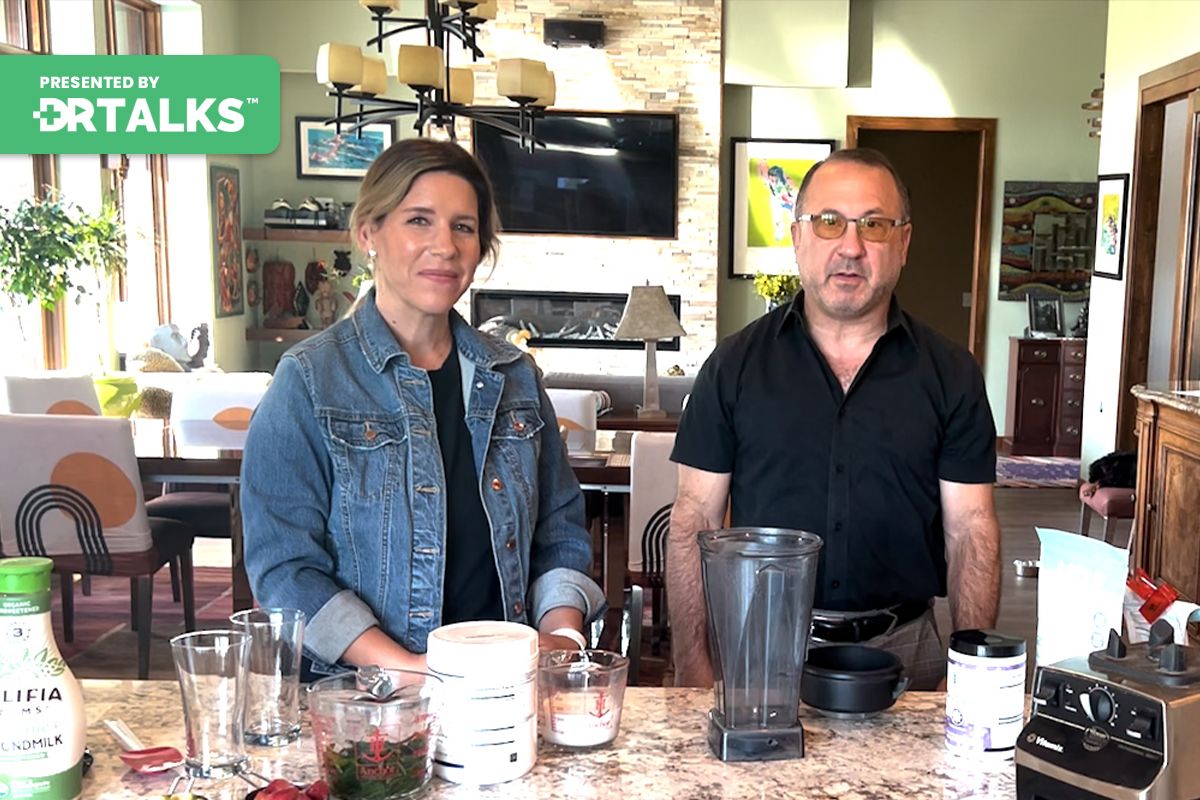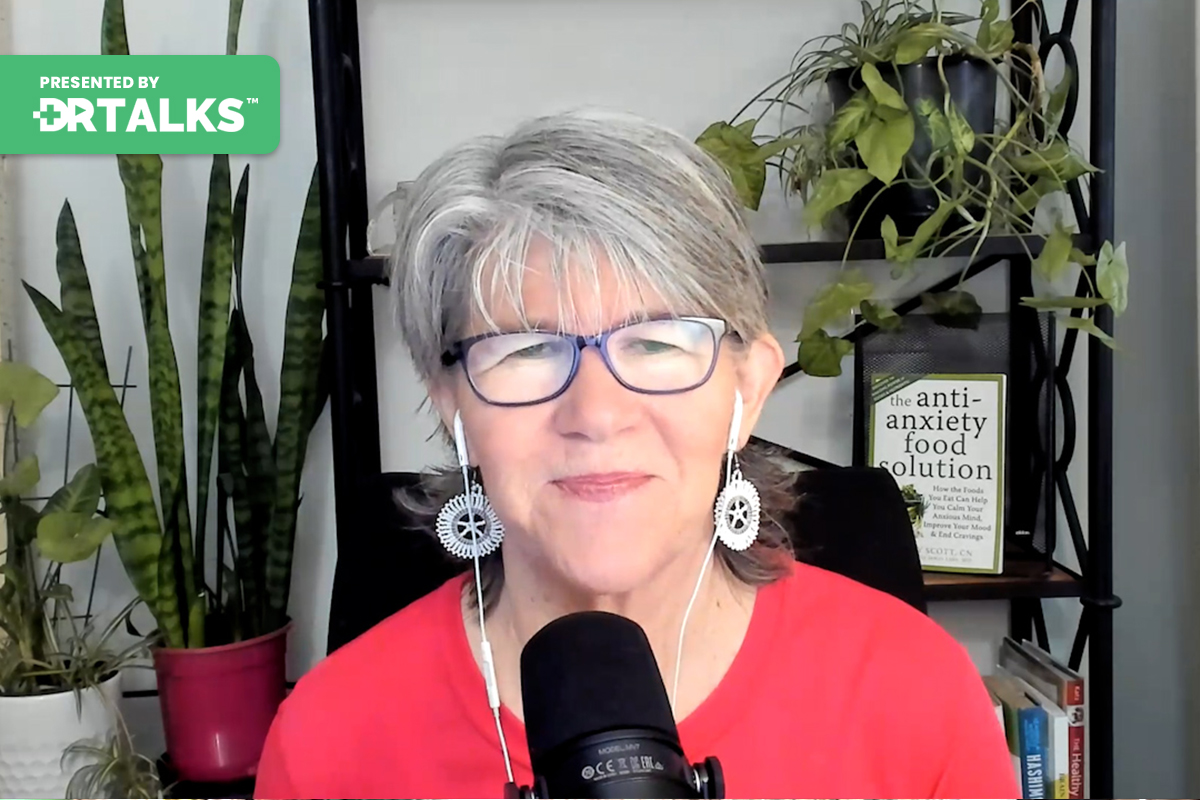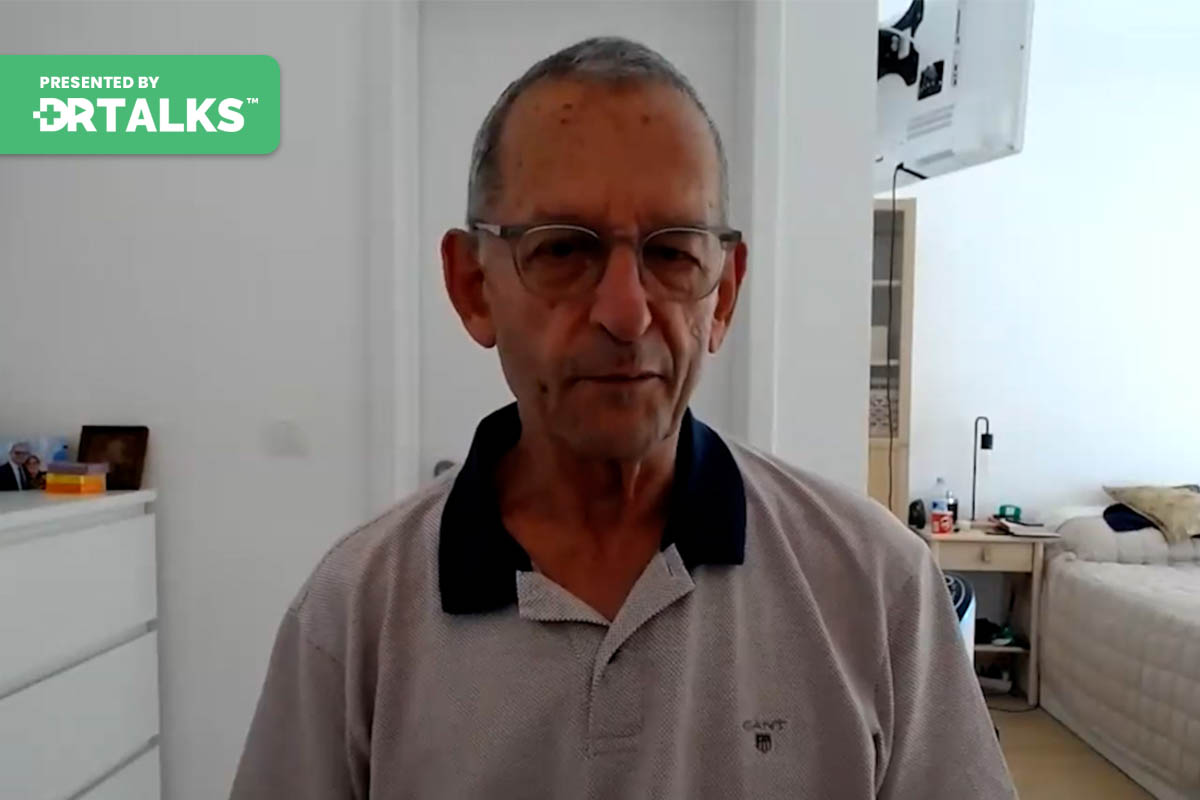Join the discussion below
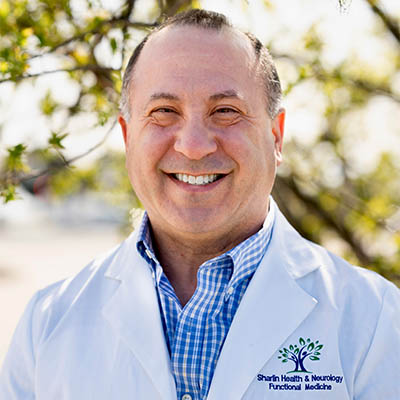
Kenneth Sharlin, MD, MPH, IFMCP
Kenneth Sharlin, MD, MPH, IFMCP, is a board-certified neurologist, consultant, functional medicine practitioner, Assistant Clinical Professor, researcher, author, and speaker. His medical degrees are from Emory University, The University of Virginia, and Vanderbilt University. His functional medicine certification is through The Institute for Functional Medicine. He is author of the... Read More
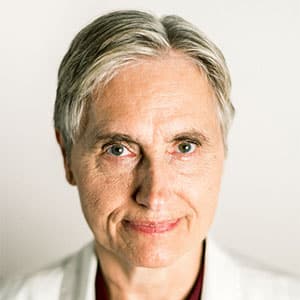
Dr. Terry Wahls is an Institute for Functional Medicine Certified Practitioner and a board-certified internal medicine physician. She also conducts clinical trials testing the efficacy of diet and lifestyle in the setting of multiple sclerosis. In 2018 she was awarded the Institute for Functional Medicine’s Linus Pauling Award for her... Read More
- Grasp the connection between mitochondria power, nutrition, and healing
- Understand the pioneering modified Paleo diet for neurological diseases
- Learn about the regenerative effects of a ketogenic diet
- This video is part of The Parkinson’s Solutions Summit
Kenneth Sharlin, MD
Hello, I am Dr. Ken Sharlin, and you are listening to or viewing the Parkinson’s Solutions Summit today. I am truly honored to welcome a very dear friend, a fine physician, and an outstanding researcher who truly bridges both the conventional and functional integrative medicine worlds with her work on multiple sclerosis and helps to dig down deep into the root causes of disease, helping people affected by neurodegenerative disorders, including Parkinson’s disease, to change their disease trajectory. I can think of no other person in the world who gives so many people hope and empowers them to change what they have been told about how their disease outcome can go than Dr. Terry Wahls. Thank you, Dr. Wahls, for joining us.
Terry Wahls, MD
Thank you, Ken. Again, I value our friendship and collaboration just as much. I love that we have been at this together for a decade now.
Kenneth Sharlin, MD
Absolutely. There are probably just a few out there who are not familiar with you and your work. Could you just spend a moment or two telling us a little bit about yourself?
Terry Wahls, MD
Sure. In 2000, I walked with my wife, Jackie, a half mile from home. My left leg grew weak, dragging it half at home. I see the neurologist who says, Terry, this could be bad or really bad. We begin the workup over the next three weeks. During that time, I think about the fact that I have had 20 years of worsening electrical face pain. I know I have a progressive disorder. I do not want to become disabled. I am secretly praying for a rapidly fatal diagnosis.
Three weeks later, I get my spinal tap, my MRIs, EMG, etc., and I hear the words multiple sclerosis. I do my research, find the best MS in the country, take the newest drugs, and three years later I heard about Tilt Recline Wheelchair, which I got. My face pain continues to worsen. I am feeling tears run down my face as my ten-year-old daughter Zebby hugs me. I decide to go back to doing the basic science. I go to the PubMed, night after night. I decide that mitochondrial dysfunction drives disability, I created a supplement cocktail for my mitochondria, and the speed of my decline slows. I am very grateful. I discovered a study using electrical stimulation of muscles. I convince my physical therapist, Let me try it. He calls it a E-Stim. He says it is for athletes and that it is painful. But he does give me a test session, and it hurts like hell.
Kenneth Sharlin, MD
Oh No.
Terry Wahls, MD
But when it was over, I feel great. I would say it was because of all the endorphins from the E-Stim. We add that to my physical therapy. At that same time, I discovered the Institute for Functional Medicine. I take the course on Neuroprotection. I now have a longer list of supplements that I add, and then I have a big a-ha. I am embarrassed by how long it took me to have this. What if I redesign the Paleo diet that I have been following for the last five years yet figure out what these things I am taking in supplement form where they are in the food supply? That was more research.
On December 26th, I redesigned my Paleo diet in a very structured way. Now, for all of your listeners, I want you to understand that, at that point, I have profound fatigue. By ten in the morning, I was in a zero gravity chair with my knees higher than my nose because I could not sit up for more than 10 minutes in that zero gravity chair or I am in bed. I can take just a couple steps with two walking sticks, or I am in the two recline wheelchair. I have come to terms with that I am going to be bedridden by my illness. I am probably going to become demented by my illness and my Trigeminal Neuralgia, which has been turning on but is much more difficult to turn off, is on track to become permanently on, in which case.
Kenneth Sharlin, MD
That describes the terrible facial pain.
Terry Wahls, MD
Terrible. When it is on, a breeze triggers the pain; light triggers the pain; sound triggers the pain; chewing triggers the pain; swallowing triggers the pain; and talking triggers the pain. If I try to talk it through a sound like this, I can only get a brief sore out because the pain becomes so intense that I cannot get two syllables out. I rewrite my medical power attorney and my living wills such that if I get to the point where I quit talking and quit eating, there is no feeding tubes and no IV fluids. A very grim future. I started this new way of eating, December 26, a month later; this is stunning. I tell Jackie I would like to sit in a regular chair for supper, and I can sit up for supper for the first time in years. I began walking with walking sticks at the hospital. Stunning my colleagues in that I walk with one walking stick and then with no walking sticks.
Then, on Mother’s Day, I tell my family I want to try riding my bike. Now this is the eighth month of E-Stim and six months of the new diet, in an emergency family meeting. Jackie has Zach, my six-foot-five year old son, jog alongside in the left. My daughter Abby’s going to jog alongside on the bike, and Jackie will follow. I get on my bike, and I bike around the block. The big 16-year-old boy is crying. My 13-year-old daughter is crying, and Jackie’s crying. While I talk about this. I cry even now because it was at that moment that my understanding of disease and health was transformed. That was when I understood that who knows how much recovery might be possible? I bike to the war every day, and in October, Jackie said, Let us sign you up for the courage ride. 18.5 months now. Once again, when I cross that finish line, my kids are crying. Jackie’s crying. I am crying because this fundamentally changes me. The changes will change how I think about disease and how it will change the way I practice medicine, ultimately changing my research and my mission, which is to teach people that there’s a lot you can do to change the course of illness.
Kenneth Sharlin, MD
Can I ask you a couple of questions, Dr. Wahls? First of all, I do want to let our viewers know that mitochondria power our cells and mitochondria, which evolutionarily were probably separate organisms but became incorporated into our cells because of the food that we eat. They are supported by nutrition, and they cannot function without nutrition, so the person with MS and Parkinson’s disease, because fatigue is a very common symptom in Parkinson’s as well, they do not have the energy. Here is my question, Dr. Wahls, Here you are with facial pain, severe fatigue, tilt recline wheelchair, and somehow you dig down deep and you force yourself to use one of the most fundamental healing tools that we have, and that is food. How did you find it? Many people, my patients might say, that is too hard. How could you do it? How did you do it?
Terry Wahls, MD
When I was diagnosed, my children were very young—eight and five. At that point, I was still athletic and pretty rapidly and not athletic and then severely disabled because I kept having to reimagine what it meant to be a parent, a life partner, and one of the things I’d grown up on a farm, so we had lots of chores that you had to do, and you realized that your work was integral to the farm and I knew my kids would have to have chores. In that, I thought deeply, What is the most important thing that matters to me? That my children would learn how to be successful and that life is not fair. Life is hard, and I could either give in to the despair that I felt, and I felt plenty of despair, or I could keep doing the best that I could every day because my kids were watching. They were going to model whatever it was that I was doing, so I did my little workout every day. then when I figured out that food mattered. We’re doing the best we can with food, because that is what mattered to me: showing my kids that, life is hard, but so what? You keep doing the best you can, and that is something I talk to my patients about.
Kenneth Sharlin, MD
Really important.
Terry Wahls, MD
All of our choices will be absorbed by the people around us. We can either give in to our despair or we could keep doing the best we can with the next little actionable step that we can take to improve our diet, work on our stress management, or work on an exercise program. We talked about those three domains. Pick one, keep making little, little progress, and be a model to inspire your family.
Kenneth Sharlin, MD
One of the things that I hear quite frequently is, What the stage am I at? Alzheimer’s, Parkinson’s, and MS. What stage am I at? I said, I almost want to say, What stage do you want to be at? Because who is in control here? What we are learning is that you have a lot more opportunity to take control of the situation. What you are telling me and what I am hearing, if I am correct, is that you find your way, and that becomes your anchor to take control of the situation.
Terry Wahls, MD
When we understand why we can endure immense struggle and difficulty. Because now, I have a purpose and a reason to do the work. Whether or not I necessarily get to the destination, my family will understand that I have a Why and a purpose, and I have continued to make forward progress.
Kenneth Sharlin, MD
At this point, you are pioneering something where you are utilizing a modified Paleo diet. Yes, and it seems to me that up until your discovery, the Paleo diet had not been discussed or explored in the context of chronic neurological diseases, MS or Parkinson’s. There has been some dietary intervention in the past, but it wasn’t the paleo diet. that dovetails even into some of your research. Can you talk a little bit more about why that diet is so popular and what makes it perhaps preferable to other approaches?
Terry Wahls, MD
Yes, there is a bunch of research on the Mediterranean diet that has been very favorable, and that is a great diet. However, if we look at our evolutionary history, we have far more than 85,000 generations of humans eating the paleo diet, which includes greens, leafy vegetables, some berries, some starchy tubers, and tubers in meat, fish, and poultry. That is how we evolved; then, only about a hundred generations of people ate legumes, grains, and dairy. From an evolutionary biology sense, this is the diet. There are many versions of the paleo diet because there are many ecosystems in the world. Historically, I think we have much more confidence in that diet. Now, scientifically, since my first case study, which was published in 2010, there are more studies, and we have done most of them using the Paleo diet, looking at outcomes in relapsing and remitting MS.
Progressive MS most consistently showing reduced fatigue, improved quality of life, and improved motor function. In a network meta-analysis that looked at the 12 dietary studies that have been done in the setting of multiple sclerosis with an end of 608 people looking at the Mediterranean diet, Paleo diet, low saturated fat diet and inflammation, diet, ketogenic diet, fasting strategies, calorie restriction, and usual diet, the paleo had the highest effect size for reducing fatigue and improving quality of life and was better than the Mediterranean diet by almost twice as effective as the Mediterranean diet for improving quality of life and 50% more effective than the Mediterranean or low-fat diet for reducing fatigue.
However, I tell my patients to do this as a family intervention if they want. If you do the paleo diet, if that is too hard, but the Mediterranean diet is what you can do, start there. If that is too hard, just work on improving your diet step by step. I usually work on getting more non-starchy vegetables, and then when they are ready, we can talk about the things to eliminate or reduce.
Kenneth Sharlin, MD
Some of the simple things you might say is that I shop at the edge of the supermarket as a first step if you are not ready for the full-on approach, so to speak.
Terry Wahls, MD
If you can find some recipes that include more vegetables, a lovely thing to do is to take some cooking classes to learn how to make some salads or soups. I make one-pot skillet meals because I want the things that you make to be easy. We had a therapeutic lifestyle clinic at the VA where we took all sorts of people with autoimmune diseases, some cognitive decline issues, some Parkinson’s, and a variety of psychiatric problems. We would teach them how to make simple meals while they shopped in small-town grocery stores in rural Iowa, very basic ingredients, and these people were living on food stamps, so they were not eating organic food. They were getting frozen vegetables, sometimes canned vegetables. We would talk about how to use venison because people usually have access to lots of venison. They still had a remarkable reduction in fatigue and a remarkable improvement in quality of life.
We have to watch them closely because, where I would be withdrawing their medicines, their blood pressures would be improving and their blood sugars would be improving. We are reducing some of those medications, and we are often able to, and these people were on 20 medications. That was pretty common. We are reducing their meds, simplifying their meds, and limiting some meds, and I would have people with diabetes get off their diabetic meds, and some of our young men would come in with big smiles on their faces because, they are like, Dr. Wahls, you told me my love life was going to be better.
Kenneth Sharlin, MD
Hey, you do not; it is not just for young people, just so you know.
Terry Wahls, MD
Yes. It was remarkable. I kept having to redesign the clinic because, after the first year, word of mouth created more and more interest and demand for the practice that we had created. We went from small groups to larger groups to classes where I am teaching these concepts, using a PowerPoint to a large group of veterans in their would they would bring one family member. We are transforming the lives of veterans. While I was not the provider for the spouses, the spouses were telling me that their health was improving as well.
Kenneth Sharlin, MD
Yes. We are here at Charlotte Health Neurology with our brain tumor program. I almost insist that the person who are, the patient who is engaging our services, bring their spouse, bring their partner, bring their adult child, whoever is with them all the time, and then they get two for the price of one, if you will, because they get to experience all the same things. On the other hand, it is the formula for success because regardless of what happens in the clinic or regardless of what happens when you engage in an online program, it is what happens at home that makes the biggest difference.
Terry Wahls, MD
I completely agree. We stress that this is a family intervention. This is not a patient intervention; we view what you are eating as a family decision. The meditative stress you use in practice is much more successful when done together as a family, and the gentle exercise program is again much more successful as a family. Occasionally, we have people do it individually. They struggle. It’s much harder for them to sustain it. The people who understand and embrace the family intervention are very successful, and they come back and will tell us about patient success and, incidentally, the transformation of the whole family.
Kenneth Sharlin, MD
Yes. Aside from accountability and support, we as human beings thrive on connection. Food is a connection. Our stress resilience practices become connections. That could be a walk in nature, For those of you who want to begin exploring this type of lifestyle medicine, there are probably two or three basic, truly fundamental concepts that we are emphasizing here. One is that your food should deliver the nutrition that your body needs. We often use the term nutrition density. Because if I reference Dr. Perlmutter, who historically would talk about a steak and a Snickers bar, they might have the same number of calories, but the nutrient content of a sirloin steak versus a Snicker bar is completely different. It is not necessarily a template diet where I have to have a label: Keto, Paleo, Swing diet, or what have you? It is about meeting your body’s nutritional needs at all times. Then we want to be able to identify foods that drive inflammation versus foods that meet our needs, which tend to be anti-inflammatory because there is something that’s not meeting our needs. Our bodies go into fight or flight mode, and that is what intra-inflammation is: avoiding sugar, considering avoiding dairy, particularly if you have MS, things like that. Then we want to make sure ultimately that we are giving the digestive system a rest as well. Would you agree with that?
Terry Wahls, MD
I think that is all completely marvelous. When you are shopping, because we’re all pressed for time, many people have for a long time cut already processed foods in a box—mac and cheese in a box, a hamburger helper. So those foods have been processed, and the nutrition has been removed. They might add a few vitamins back to the enriched flour. But we know that if you can learn how to chop and cook using ingredients with a skillet meal, a soup, a pressure cooker, or a slow cooker, it will be less expensive, and you will have a lot more nutrition if you get even brown rice and beans, which I am not fond of because I would rather do paleo, but that would be a very cost-effective way to get protein from food if your budget is severely strained. Yes, we teach people how to do that. I would rather you get a cheap cut of meat, put it in a slow cooker all day with some vegetables and perhaps some yams or squash, and end up with a lovely casserole or stew that you prepped in the morning and came home from work. There, you have a lovely meal.
Kenneth Sharlin, MD
Absolutely. Another thing you might say is, Hey if you have to read. If you are buying something as a bunch of ingredients and you need a chemistry degree to understand what those ingredients are, it is probably not food. I love when Michael Pollan talks about the fact that the food that is best for you does not have to announce itself as to what it is or whether it is healthy for you or not. It is another wonderful way to look at it.
Terry Wahls, MD
If your grandmother would not have recognized what that food is for the young people to see, that would be your great-great-grandmother. Then you would go. Well, if she could not have gotten it, I would be better off not getting it either.
Kenneth Sharlin, MD
I have something like that, Dr. Wahls, I must say, I want to tell the viewers that you are so kind to share. Many patients are with me. We collaborate in a lot of different ways. I do see many people with MS, not just Parkinson’s disease, and they have read your book, The Wahls Protocol, which everyone should have on their bookshelf, scalable, pretty much everywhere. But folks do focus on the diet, although the protocol includes more than just food, to be clear. But one of the aspects of your approach to food is that you referred to level one, level two, which is the mainstream, if you will, Wahls approach. then level three, which is more of a ketogenic diet in which people who are taking that approach ultimately use fat as fuel for their mitochondria over carbohydrates.
I am wondering if you can comment on that a little bit because I do get a lot of questions about that, and I hope you will agree that I say that the Wahls Paleo diet, I am sorry, the Wahls Ketogenic diet is a tool that maybe sometimes there is a bit of a misunderstanding that level one, level two, and level three is almost an ascension where when you have truly arrived, you reached level three. I said, No, level three is very valuable. It is the right tool at the right time. But should everyone be aspiring to ultimately follow a ketogenic diet?
Terry Wahls, MD
I think, I would rather have the vast majority stay at level two at Wahls Paleo. Keto diets can be super helpful for people with seizures, people with cancer, and people with significant cognitive decline in dementia. But you have to watch that very carefully because when I put someone in ketosis, part of the signals that my body is seeing is, Okay, I am in starvation mode. I am going to adjust my hormonal balance to that starvation mode, feel more conservative, and it will be harder to get pregnant. I will be a little bit more vulnerable to infections. and historically, humans were in ketosis for much of our evolutionary history. But we are in ketosis because of exercise, not because of a high-fat diet.
We are in ketosis because it took that much work to get our food, and then we would eat. We would have a successful hunt and a successful gathering. We would have plenty of food for a few days. We would be out of ketosis. We would not be working so hard because we had our food, and then we would have to go out and get our food again. We are back in ketosis on the basis of exercise. From an evolutionary standpoint, I think there is more evidence of being in ketosis for maybe a week and then being out of ketosis for maybe a week. So going back and forth about metabolic flexibility is what I prefer that people do. I think that is probably going to be, I expect, superior to long-term ketosis. However, for people with seizure disorders, I may leave them in long-term ketosis; for people with cancer, I will have them in ketosis as they go through all of their cancer treatments.
Kenneth Sharlin, MD
Yes, at the cellular level, there are certain things that happen during ketosis, things like the ability of your immune system to go and clean up old, worn-out cells and old, worn-out mitochondria, but then, with the refitting, the introduction of a little more carbohydrates, at least the more complex carbohydrates that our bodies can thrive on to produce things like short-chain fatty acids. Then there is a regenerative effect of the shift from a key to a genic diet back to a Wahls level two.
Terry Wahls, MD
During that time, I want to be sure that all of your listeners know this. I go into ketosis, and then when I refeed a little more protein and a little more carbs, I release more stem cells, and I have a little more protein in my diet. As the stem cells are saying, Okay, time to rebuild, I have the building blocks to do that rebuilding. That is what I do personally. Kenneth, I am in ketosis, and then I have a little higher protein and a little higher carb diet for the rebuilding phase. Then I am back in ketosis. When I check my telomeres, I see a great measure of aging. The first time I checked, I was preparing myself mentally. Okay, you have a progressive neurodegenerative disease. My telomere markers are going to be 15, maybe 20 years older than my chronological age. I was bracing myself for looking at those results. Then delightfully surprised to see that I was biologically 15 years younger than my chronological age. I was okay, I guess, and I am doing pretty well.
Kenneth Sharlin, MD
I need to be 15 years younger too. I think I’m new to this.
Terry Wahls, MD
I bet you are.
Kenneth Sharlin, MD
I know with the flash that we have just under 10 minutes left, and I definitely want to end with some announcements about how viewers can ultimately connect with you and some of the things that you have going on. But I also want to take just a few minutes before we do that and share with viewers some exciting information about a conference you have just returned from because it tells us that we are on the verge of a major shift in how medicine is practiced.
Terry Wahls, MD
Yes, so I attend the consortium of multiple sclerosis centers. There is about 2,000 physicians, scientists, nurses, and other health professionals that take care of MS patients. The first time I attended five years ago, we had a research poster about diet and MS. I was the only one talking about food in MS, and it is pretty clear the sentiment was: Eat what you want. It does not matter. We kept doing our research, kept similar posters, kept submitting proposals for talks, and gradually, things changed. Our body of research has grown. This year, we had three oral presentations about diet and nutrition. We had four research posters. We were part of the update on dietary research in multiple sclerosis, which is a three-hour symposium reviewing the research, reviewing the meta-analysis, and talking about the role of dietitians in supporting patients as they improve their diet. That was very exciting. What was also super interesting, Ken, is that each year more neurologists are coming up to me, saying Dr. Wahls, we have a few questions, and then they whip out their phones and say, Would you be okay with getting a picture with me? My patients would so love that. Each time I come back, more and more neurologists are stopping me from having questions and asking for selfies. Which I graciously agreed to, and more of the self-help organizations that are there are asking me to come to the booth and take some selfies with them because they would like to post that to their followers. I have gone from being dangerous and bad, severely criticized, to being celebrated as the grandmother who led the way and is making all of this possible.
Kenneth Sharlin, MD
I am going to say that you are dangerous to the conventional way of thinking about how medicine should be practiced.
Terry Wahls, MD
I love telling my students, the medical students, and when I lecture my students, I am ruining their careers because they will not be able to think about conventional approaches the same way. After hearing my story and being exposed to what is possible,
Kenneth Sharlin, MD
Now viewers, I have worked with so many patients who follow Dr. Wahls and follow the Wahls protocol, and it has transformed so many people’s lives. Is MS curable? Probably not yet, but maybe one day. Is MS. reversible? Yes. Is MS controllable through food and sleep, stress, resilience, practice and movement, and our deep relationship with one another, it can absolutely transform the trajectory of your disease and put you back in the driver’s seat. We have seen this over and over and over again.
Terry Wahls, MD
To all of your listeners. I want you to realize that progressive MS has been told for years and decades that it is not reversible. There is so much similarity. The story between progressive multiple sclerosis and Parkinson’s is that you have been told that there is nothing you can do that you cannot reverse or improve. That is wrong. I have been told for decades that we’ve been telling people with progressives almost for decades that there’s nothing they can do. We have shown that there is a lot we can do. If I can come back from such a profound disability, I can now jog in the neighborhood where I could go to the Rocky Mountain National Park and hike up at 13,000, well, 12,000 feet for 3 hours with my family over fairly rugged terrain and have a great time. There is hope for all of you.
Kenneth Sharlin, MD
Wow. Dr. Wahls, first of all, I want to thank you for being a participant today in the Parkinson’s Solutions Summit. I want to encourage folks to both connect with you and ask you how they can connect with you, but also remind folks that Dr. Wahls puts on annual conferences this year. It was the MS Summit that was done online, similar to our Parkinson’s Solutions Summit that occurred in June 2023. But there are plans for 2024 as well. Is that correct?
Terry Wahls, MD
Yes. We have not yet set the date. It will be sometime in the summer. I will probably do it, perhaps a little bit later. We have not set it. I am guessing it will probably August, I predict, but we will hopefully know that very soon.
Kenneth Sharlin, MD
If people want to find you online or in other ways, we have talked about your book, but tell us.
Terry Wahls, MD
Yes. My website, TerryWahls.com. When you go there, you can sign up for my newsletters and get our research updates. I would also encourage you to follow me on Instagram at Dr. Terry Wahls. Dr. Terry Wahls, you will see what I am eating and doing and get lots of fun tips and inspiration. If you have multiple sclerosis, look at our research website. TerryWahls.com/MSStudy on screen and participate. Be part of a patient registry for future studies or enroll in the current study.
Kenneth Sharlin, MD
Definitely. We love to support research and your foundation as well. For those who do not have the means to do so. Well, Dr. Wahls, it is truly an honor once again, and as always, to visit with you today and to learn about your wonderful work, your personal journey, and how you have inspired thousands and thousands of people with MS, Parkinson’s, ALS, epilepsy, and Alzheimer’s disease to take back control of their lives. Thank you so much.
Terry Wahls, MD
Thank you, Dr. Sharlin. I love what you are doing, and I always love to collaborate with you.
Downloads

